DECODING AN OFF-ROAD TIRE: WHAT THE NUMBERS ON YOUR SIDEWALL MEAN
Brought to you by Driving Line | January 21, 2020
Off-Road tires can give your truck or SUV a distinct look, and greatly improve its performance. But how do you know you’re getting the right tire for your needs? Beyond the aesthetic tread patterns and sidewall lugs, there is a wealth of information printed on the tire itself that can tell you pretty much everything you need to know about it. Having this knowledge will not only impress your friends, but it can help you make the most informed decision on your next tire purchase. In this article, we’ll explore some of codes and markings on off-road tires, and explain how they can be useful when choosing the right tire for your vehicle.
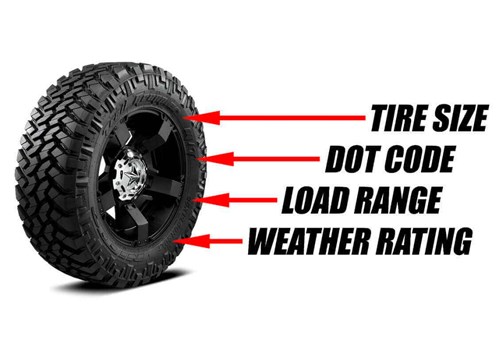
Sizing
The first set of numbers we’ll be looking at denotes the sizing of the tire. This is sometimes the largest printed set of numbers on your sidewall, but sometimes can be printed just as small as everything else, depending on the tire manufacturer. Tire sizes come in two forms, much like tool sizes: floatation sizing, and metric sizing. You may have heard that a 285 is “pretty much” a 33” tire, but how are these numbers related? Let’s breakdown the difference between the two types of sizing. Metric sizing on off-road tires is typically preceded by letters. In the size LT285/70/R18 on this Nitto Ridge Grappler (below), LT denotes the tire is made for a light truck. If the numbers were preceded by the letter “P,” it would mean the tire was made for a passenger car. The next set of numbers, “285” denotes the width of the tire’s tread, in millimeters. Pretty straight forward. The second set of numbers, “70” in our example, is the aspect ratio of the tire, or 70% of the total width of 285mm. The next number is also preceded by the letter “R.” which means this is a radial tire, with an 18-inch wheel diameter. Metric sized tires typically offer more variety in sizing, such as short, wider tires, or tall, skinny tires.
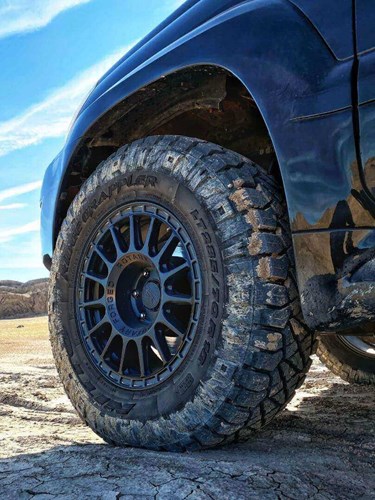
The standard off-road tire sizing is one that you may be more familiar with. We will use 35x12.50R17 from the Nitto Terra Grappler G2 in this example (below). The first number is the overall diameter of the tire in inches when inflated to maximum pressure. The second number is the width of the tire’s tread, in inches. The third number, again preceded by the letter “R” for radial, is the diameter of the wheel, same as the metric sizing.
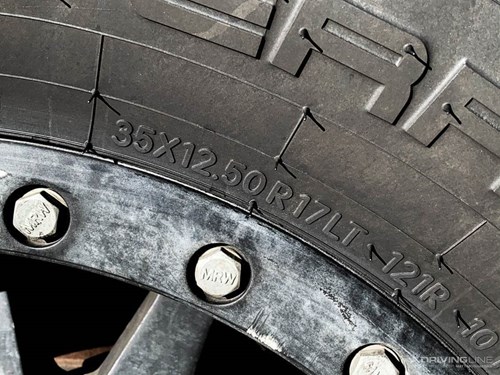
Load Rating
Another important piece of information to understand when choosing the right tire for your vehicle is its load rating, or load range. This rating refers to how much weight each tire can safely carry at maximum inflation pressure. You can usually find this code printed on the sidewall, in the form of a letter. Load Range C, D, E, and F are common among off-road tires. The basic way to read this is to remember that load ratings increase as the letters in the alphabet go on. For example, load range C tires can carry less weight than load range D, and so on.
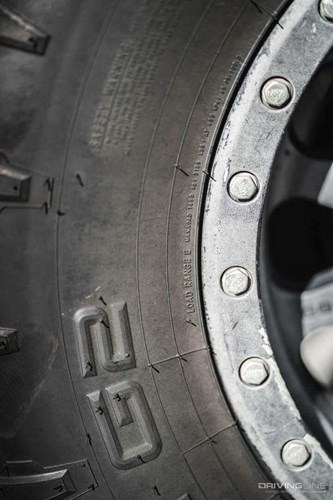
Often, the maximum load measured in pounds is also printed near the load range on the sidewall. This information is extremely useful when choosing the right tire, because it will determine how the tire will handle the amount of weight you’re carrying on your vehicle. Heavy-duty diesel trucks with higher tow capacities will want load range E or F tires to safely haul equipment or toys around. Smaller, lighter SUV’s such as Jeep Wranglers will do well with load range D tires.
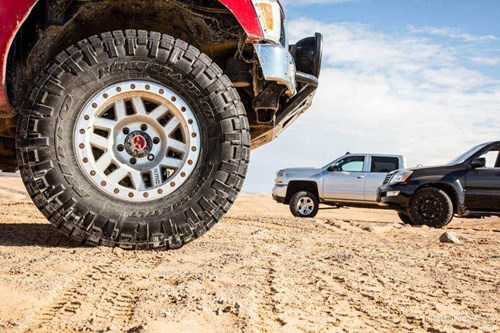
Manufacture Date and DOT Code
Perhaps one of the most useful skills to have when purchasing new or used tires is how to read the tire date code, or DOT code. This number is normally printed on one sidewall of the tire, but sometimes both. It’s easy to find, with a clear “DOT” printed, followed by a set of letters and numbers. DOT stands for “Department of Transportation”, which is easy enough to understand. The numbers that follow refer to the manufacturing information, such as the location, product size, and the date they were made.
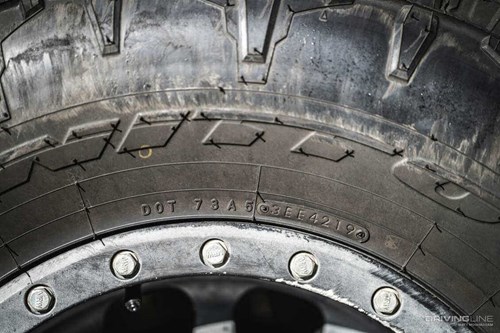
The most useful piece of information from the DOT code is the manufacture date. When buying new or used tires, always check the DOT code for the last four digits. These four number denote the week and year the tire was manufactured. In the example above, the last four digits of your DOT code read “4219”, that means the tire was made in the 42nd week of 2019. This is important to take note of, because tires, like many other goods made from rubber, have a shelf life. The older a tire is, the harder and drier the rubber becomes. Old tires carry a higher risk of becoming damaged or failing. This is true for both used and new tires that have never been mounted to a wheel. It’s recommended to only install tires on your vehicle if they were made within the last 5 years.
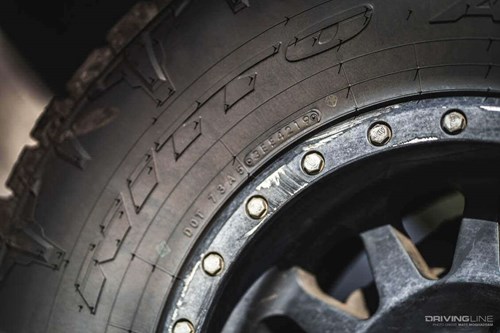
Weather Rating
Another important factor to consider when purchasing new tires for your truck or SUV is the weather rating it carries. You may have heard of all-terrain, or mud-terrain tires, but this does not necessarily denote the weather rating. On many off-road tires, you might find a small printed “M+S,” which stands for Mountain+Snow. This designation is there for transportation workers to confirm your vehicle is equipped with the correct tires for travel in snow or mountain storm conditions without the use of snow chains.
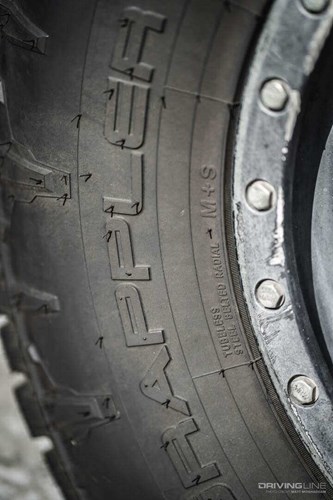
But, the “M+S” alone does not necessarily mean this is the best tire for snow or icy conditions. A separate icon, called the “three peaks snowflake” is found on some off-road tires, such as the Nitto Exo Grappler. This means the tire meets a set of stricter traction requirements in snowy road conditions. So if you live somewhere that gets a lot of snow and ice, you’ll definitely want tires with this icon printed on the sidewall.
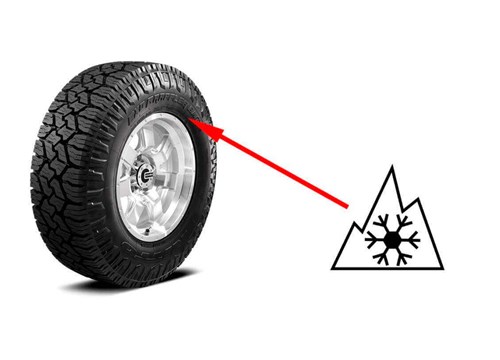
We hope this answers some questions you may have about the different markings and codes on the sidewall of an off-road tire.